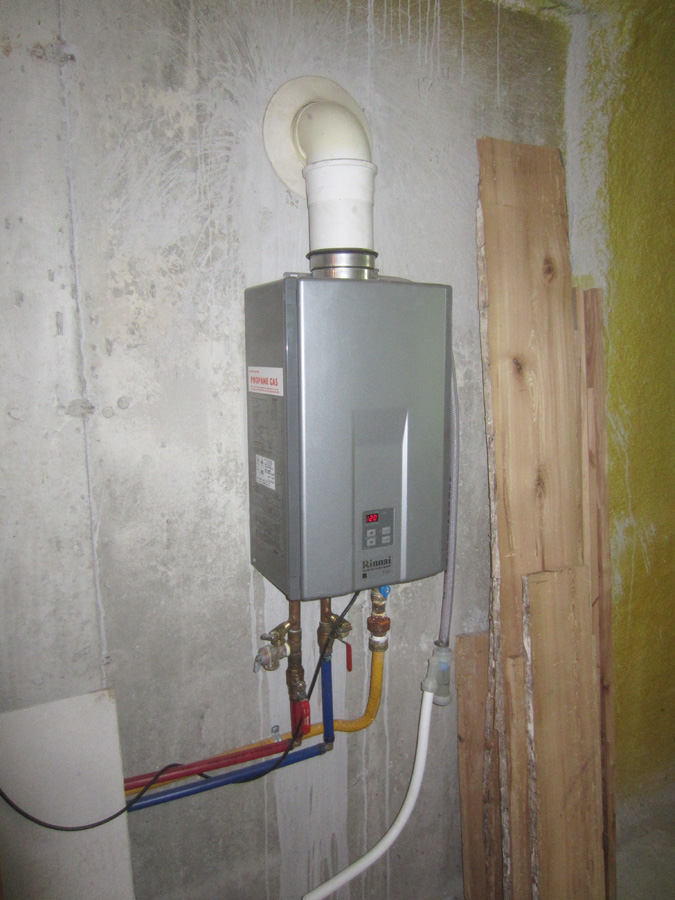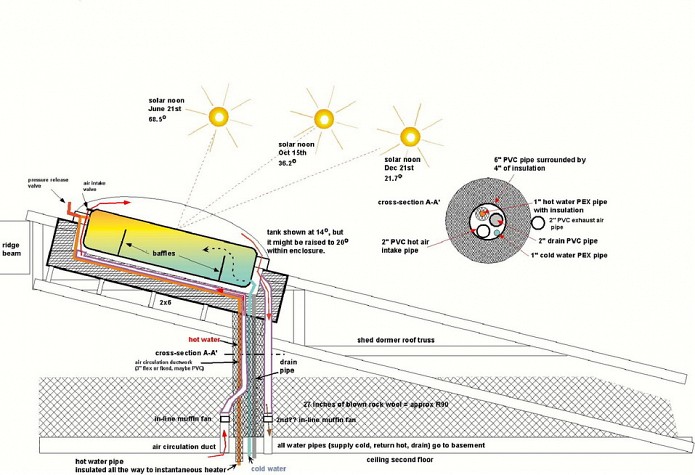Generation of hot water represents a significant energy outlay for a household. On average 12 GJ per year is consumed on heating water in Quebec.
Our hot water demands will be taken care of by a batch solar water heater in series with a propane instantaneous (tankless) water heater. During the summer it is hoped that the batch heater alone will take care of all our hot water needs. In contrast, in the coldest winter months, the batch heater will be drained and we will rely solely on the instantaneous heater.
Solar hot water heating in Canadian climates is challenging and most systems operate in the winter, at best, as pre-heaters. We decided against evacuated tube or drainback systems, as they require pump energy and complex plumbing. A thermosiphon system was also rejected because of cost and complexity. Batch heaters are simple, very efficient at translating solar energy into hot water, but have the drawback of having very little to no freeze protection. Our batch heater is a custom design that uses a recycled 60 gallon tank, coated in a selective surface, and set within a triple-glazed bubble skylight with high solar heat gain (0.79), but relatively high insulative U-value (0.50). The skylight covers an enclosure set within the south-facing shed dormer roof. The enclosure is highly insulated with Soya-polyurethane. Some heat in the insulated enclosure will also be maintained by a small fan circulating warm 2nd floor air into (and back out of) the box, with any condensation draining to the basement. By this means we hope to continue solar water heating into the shoulder seasons (late Fall, early Spring) when light freezing occurs at night. Furthermore, within the box is a flexible insulating blanket that unwinds to cover the tank when temperature in the enclosure falls below the temperature of the water in the tank.

Batch solar water heater set in shed dormer roof
Water is circulated to the solar heater by house pressure (see Water section). It is then passed down to the instantaneous heater in the basement, which fires only if the incoming temperature falls below 100oF.
A few other details follows. All hot water pipes will be insulated. The propane heater will be set at 108oF. Obviously the best strategy to saving energy on hot water is to use less. Prudent use of hot water includes cold water laundry, doing major loads of dishes and laundry all at once, and utilizing solar hot water for showers/baths at optimum times (late afternoon early evening).
One aspect of hot water rarely considered is the wasted heat that disappears down the drain and out of the house, as hot greywater. In Solarhurst most of this heat energy will be retained in the house, due to grey water holding tanks.

